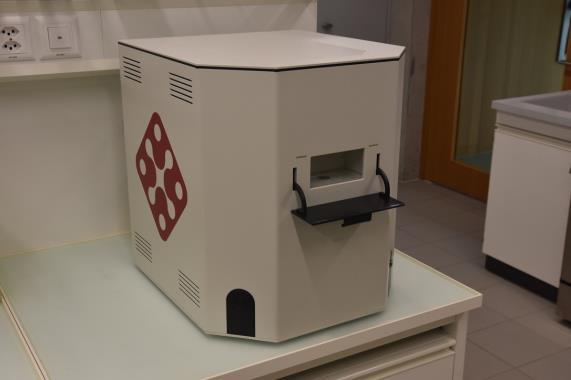Research Report 2021
Institute of Computational Physics
Silicon Solar Cell Parameter Estimation by a Convolutional Neural Network Trained on Simulated Data Simulations support the optimization process of solar cells by predicting important cell performance metrics. For this purpose, we trained a convolutional neural network (CNN) with simulated electroluminescence (EL) images and then validated the predicted parameters with an EL measurement of a silicon solar cell with an intentionally induced defect. Contributors: Partner(s): Funding: Duration:
M. Battaglia, E. Comi, E. Knapp, B. Ruhstaller Fluxim AG Innosuisse 2019–2021
In the AIPV project, the ICP collaborates with Fluxim AG that provides simulation software and measurement hardware for industry and academia. One of the commercially available software is Laoss which is used for simulations of large-area solar cells and OLEDs in which the top and bottom electrodes are reduced to 2D domains and coupled with a local IV curve. In this project, we want to find out whether manual fitting of cell parameters can be replaced by machine learning. For this purpose, we trained a CNN with a training set of 150’000 EL images, which were simulated in Laoss. The successful training of neural networks requires a large amount of data. For this reason, synthetic data from simulations are ideally suited for this purpose, as they can be generated in large quantities including extensive parameter variations. With the simulated training data, however, it must be ensured that the properties of a real measured cell are carefully modelled to ensure the transferability of
the CNN for an accurate prediction of the cell parameters. The simulated cell consisted of a shunt, an active area and several well conducting metal fingers. The desired parameters from these three subdomains (internal resistance, sheet resistance and dark saturation current) were randomized for the training of the CNN. Figure 1 a) shows the EL measurement of a shunted silicon cell and the simulated EL image is depicted in Figure 1 b). The measured EL image was then used to estimate the cell parameters of the three subdomains. The cell was subsequently resimulated with the extracted parameters and compared to the measurement. This is shown in Figure 1 c) using a horizontal cross-section in the region of the shunt, comparing the junction voltage. These results show that it is possible to extract the cell parameters with a CNN trained with synthetic image data.
Figure 1: Measured (a) and with Laoss simulated (b) EL image of a silicon solar cell with an intentionally induced shunt and metal fingers (vertical lines). A horizontal cross-section of the resulting junction voltage, when the device is resimulated with the parameters extracted from the CNN, trained with two different training sets is shown in c).
Zurich University of Applied Sciences
29
www.zhaw.ch
















